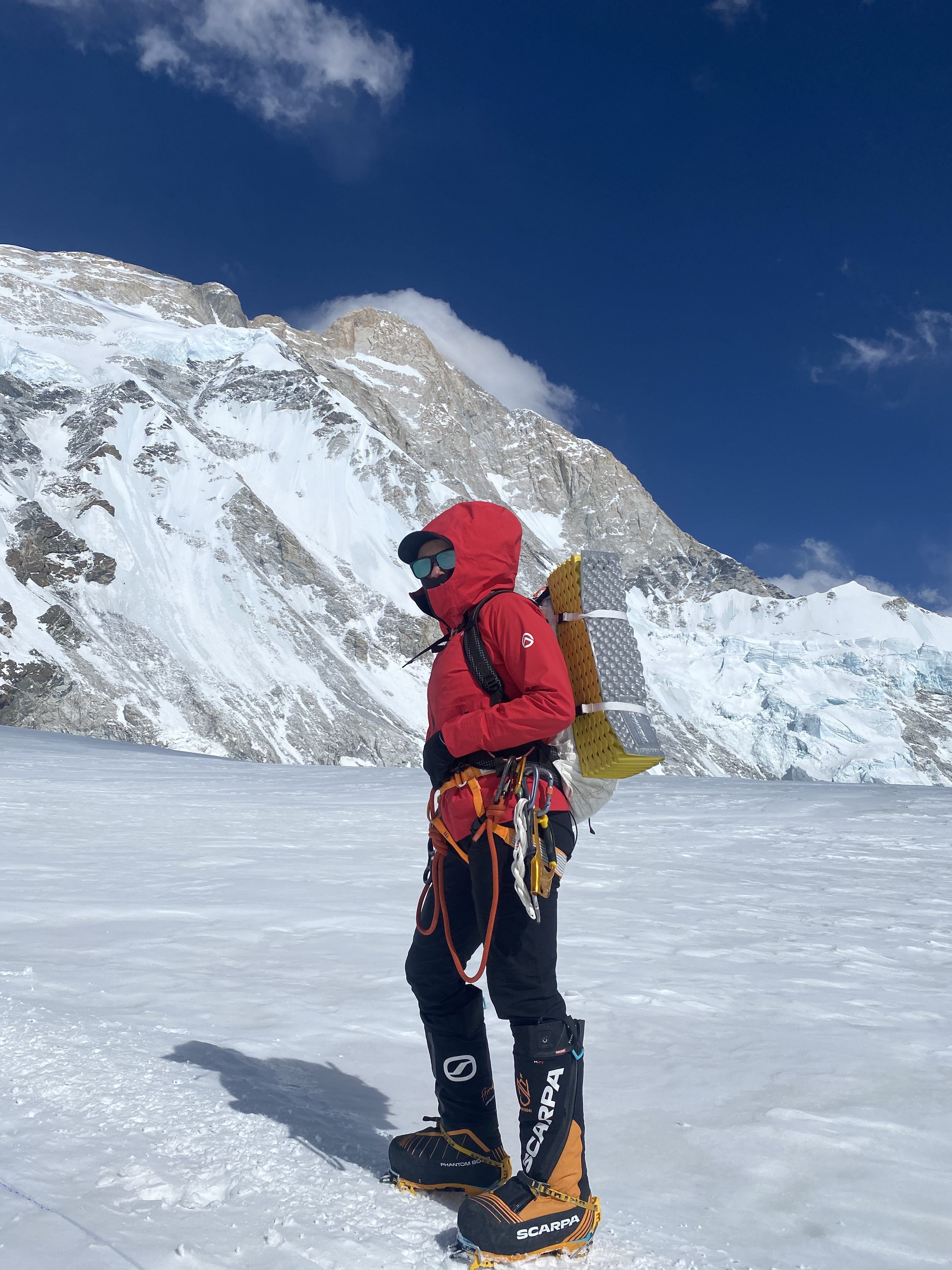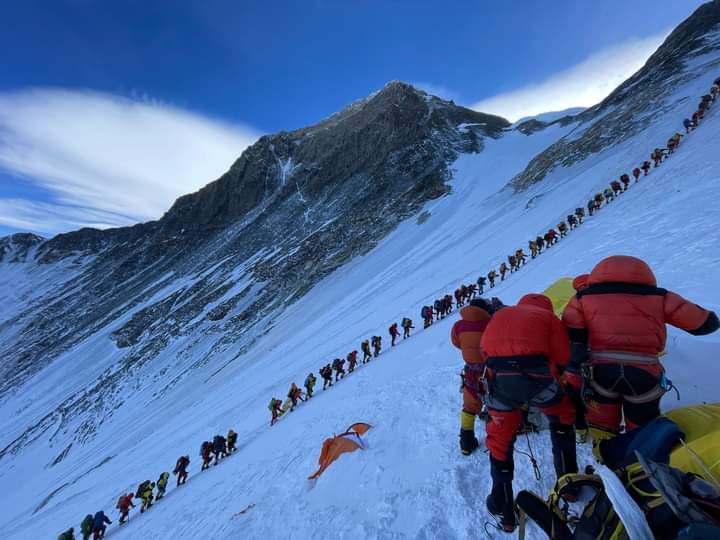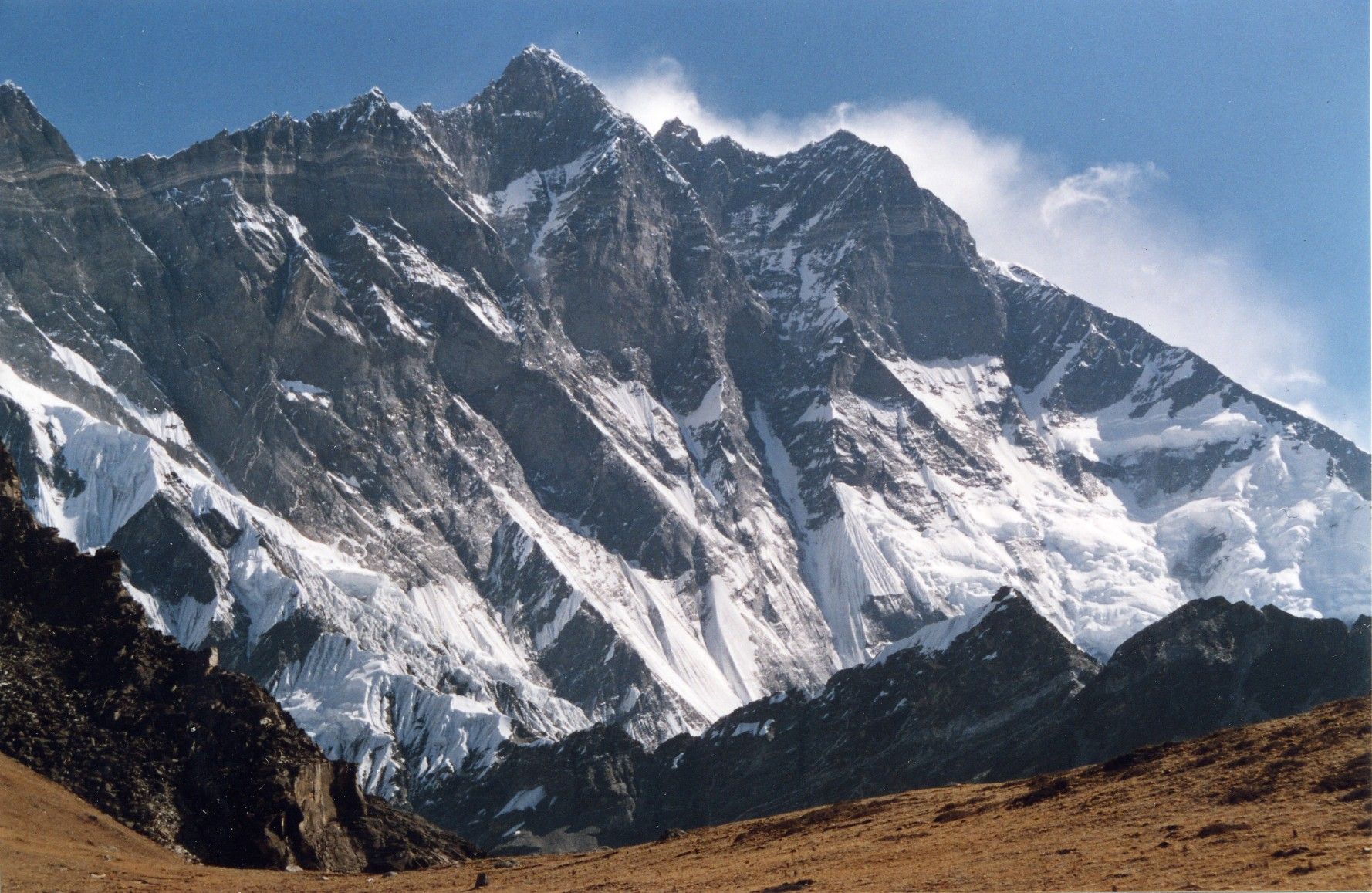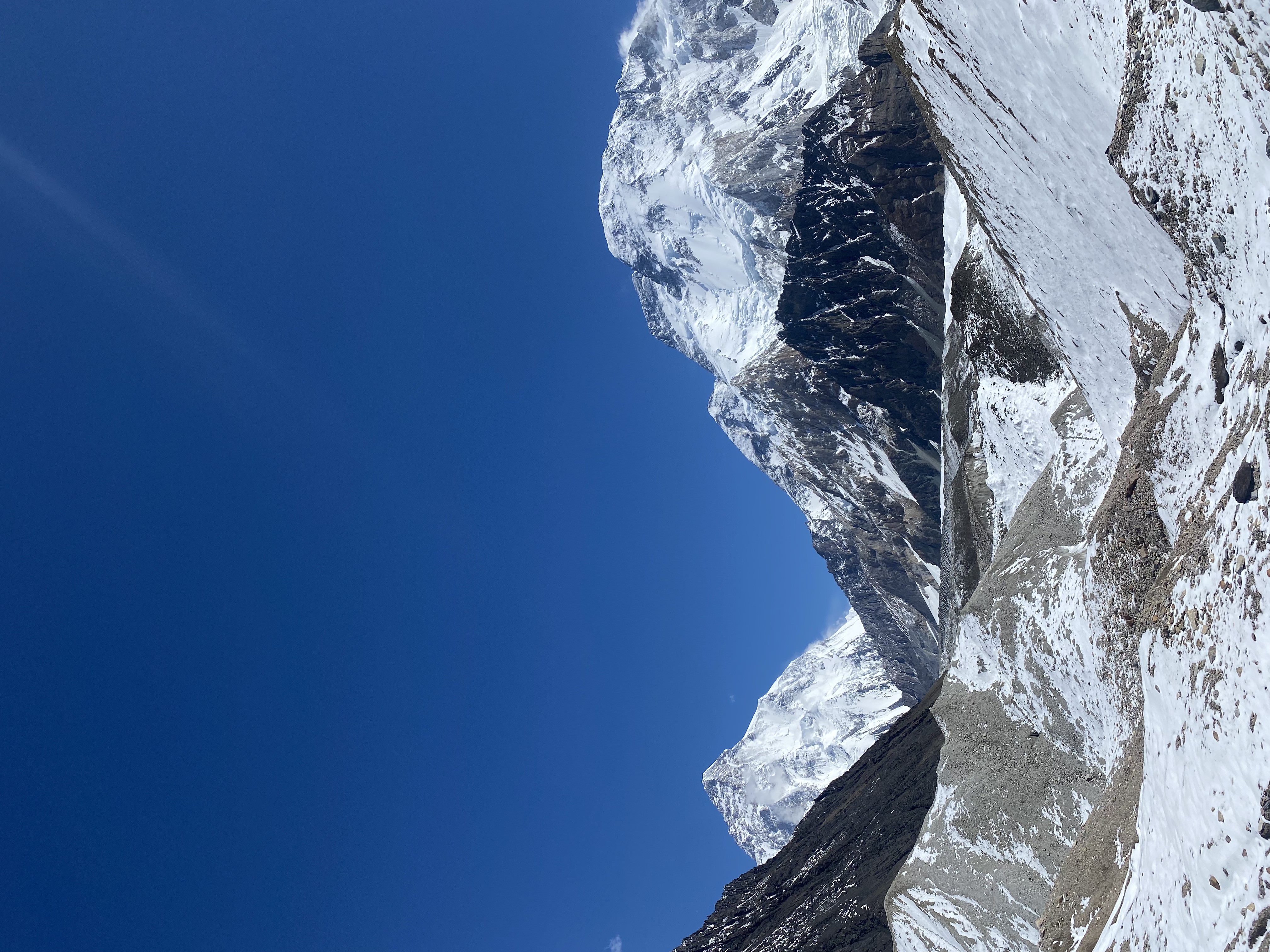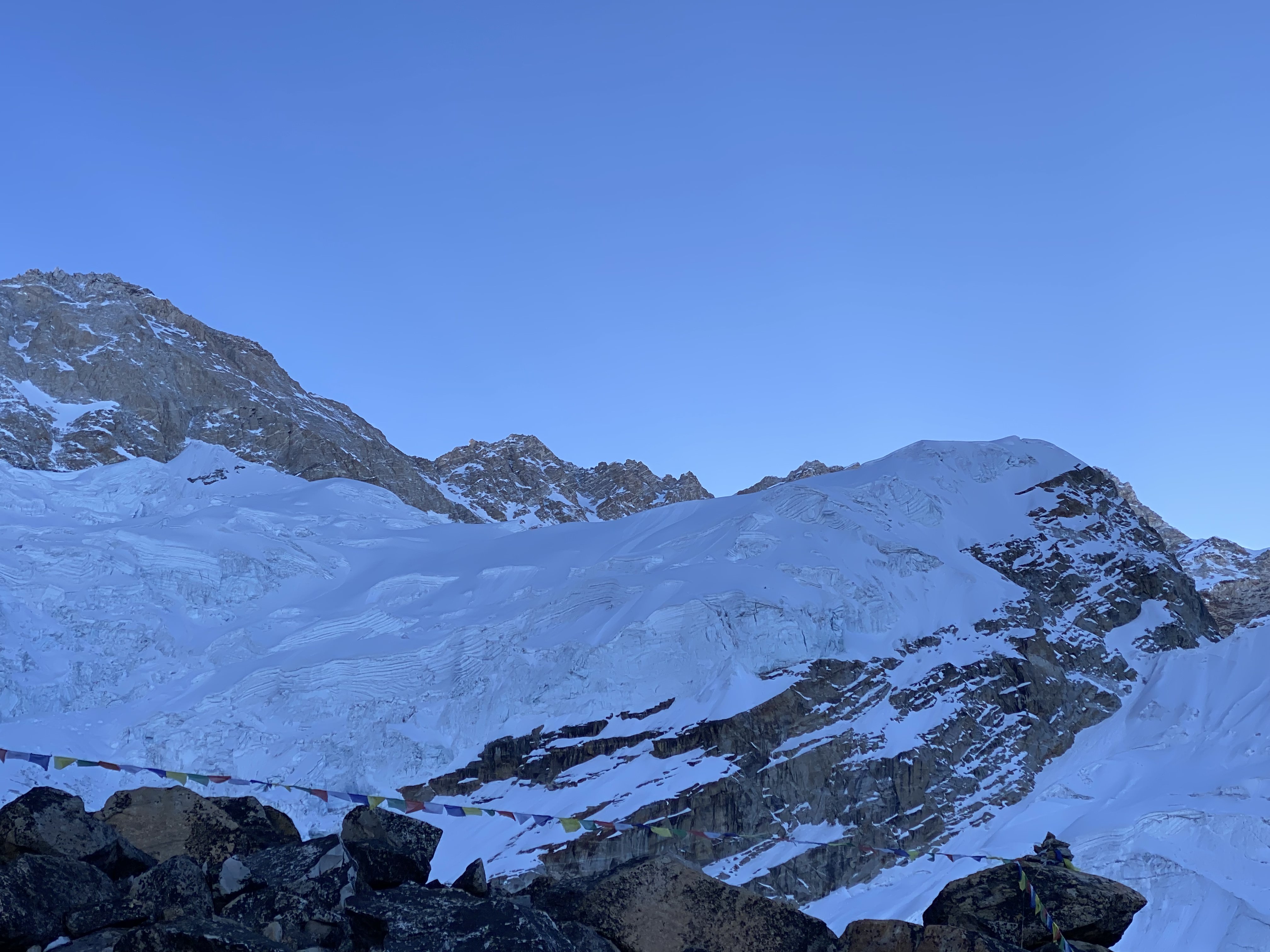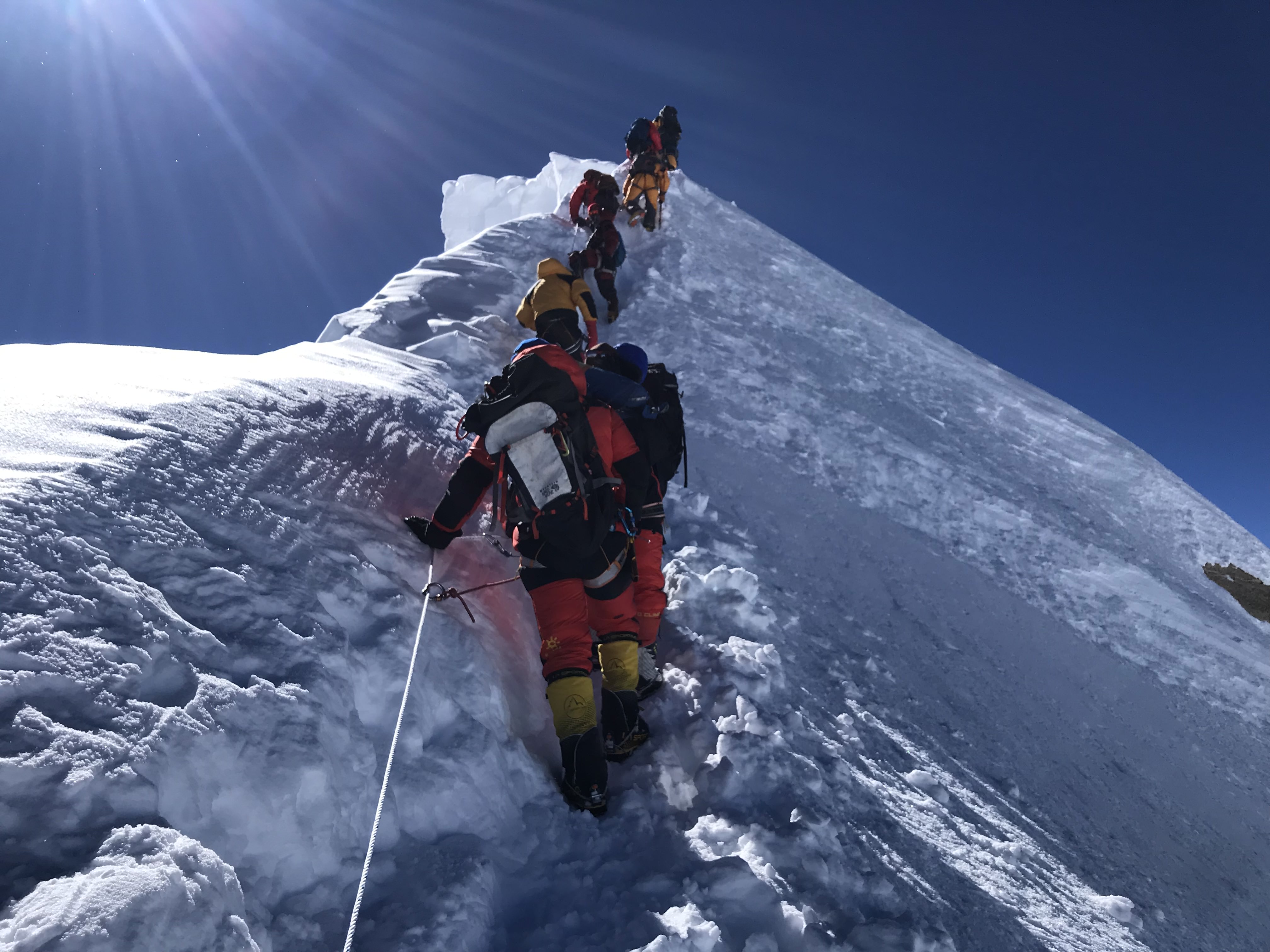Mount Makalu, located in the grand Mahalangur Himalayas, stands as one of the most impressive peaks in the world. Situated on the border between Nepal and Tibet, this lofty giant is positioned 23 km (14 miles) east-southeast of the legendary Mount Everest. With a towering height of 8,485 meters (27,838 feet), Mount Makalu is the fifth-highest mountain on Earth, offering a challenging yet captivating adventure for mountaineers from all over the globe. The first successful ascent of Mount Makalu was achieved on May 15, 1955, by the French mountaineers Jean Couzy and Lionel Terray, whose expedition paved the way for future climbers to attempt the summit. The mountain, known for its steep slopes, rugged terrain, and unpredictable weather conditions, demands both skill and perseverance from anyone who dares to scale its heights. Over the years, Mount Makalu has become one of the most highly desired peaks for those looking to tackle an 8,000-meter summit.
Climbers typically approach Makalu via two primary routes: the southeast and the northwest ridge. Each of these routes offers a unique set of challenges and rewards, requiring climbers to navigate glaciers, icefalls, and rock ridges. While both routes are demanding, they provide different perspectives of the mountain’s magnificence and the surrounding landscapes. The southeast route is often considered the more popular choice, as it offers a relatively easier approach to the summit compared to the more technical northwest ridge.
For those who are eager to take on this mighty mountain, the ideal seasons for an ascent are spring and autumn. However, spring is usually the preferred choice among climbers due to its more favorable weather conditions and stable snow coverage. The spring months provide better snow and ice conditions, which are crucial for a safer and more successful climb. During this time, the weather is generally more predictable, allowing climbers to make steady progress towards the summit.
The climb itself is not for the faint of heart. The journey begins at lower altitudes with relatively easy glacier traverses, allowing climbers to acclimatize and prepare for the more strenuous sections that follow. As climbers ascend higher, they are met with increasingly steep terrain, including icy slopes and snow-covered ridges. The climb towards Makalu La, a significant pass on the route, tests the strength and stamina of climbers as they navigate through technical ice and snow climbing. The final stretch towards the summit is equally demanding, as it involves a rock ridge ascent above Camp IV, which requires both endurance and technical skill.
While Mount Makalu presents significant challenges, it also offers numerous rewards. The mountain's snow-covered slopes provide climbers with stunning views of the surrounding peaks and valleys, making every step of the journey worth the effort. Despite its reputation for being a steep and difficult climb, the expedition is still accessible to those who are determined to push themselves to their limits. Makalu’s consistent snow coverage during the spring season reduces the risk of avalanches, icefalls, and rockfalls, ensuring a safer environment for climbers to reach the summit.
Climb Himalayas, a trusted expedition company, ensures climbers' safety throughout the entire journey. They provide crucial oxygen support above 7,200 meters, which is essential for maintaining energy levels at high altitudes. Their team of experienced guides, who are well-versed in the challenges of Mount Makalu, accompany climbers every step of the way, offering expert advice and guidance to ensure success. Fixed ropes are installed along the route, providing climbers with additional safety and stability when navigating technical sections of the climb. Moreover, Climb Himalayas ensures that the daily climbing schedules are carefully planned to match each climber's abilities, ensuring that the ascent remains challenging yet manageable.
The expedition is designed to allow for steady acclimatization, reducing the risk of altitude sickness and other complications. The well-structured daily schedules also ensure that climbers can rest sufficiently and recover from the physical effort of the climb. This makes the expedition suitable for experienced mountaineers as well as beginners attempting their first 8,000-meter peak.
Climbing Mount Makalu is more than just a physical challenge; it is an unforgettable experience that offers an opportunity for self-discovery and reflection. The breathtaking views from the summit, the sense of accomplishment, and the friendship formed among climbers and guides make it a journey worth undertaking. For those who are ready to take on the heights of Mount Makalu, the reward is not only in reaching the top but also in the journey itself, which will be imprinted in their memories forever.
An expedition to Mount Makalu promises to test one’s limits, but it also offers the chance to conquer one of the highest and most majestic mountains in the world, offering climbers an experience of a lifetime.
